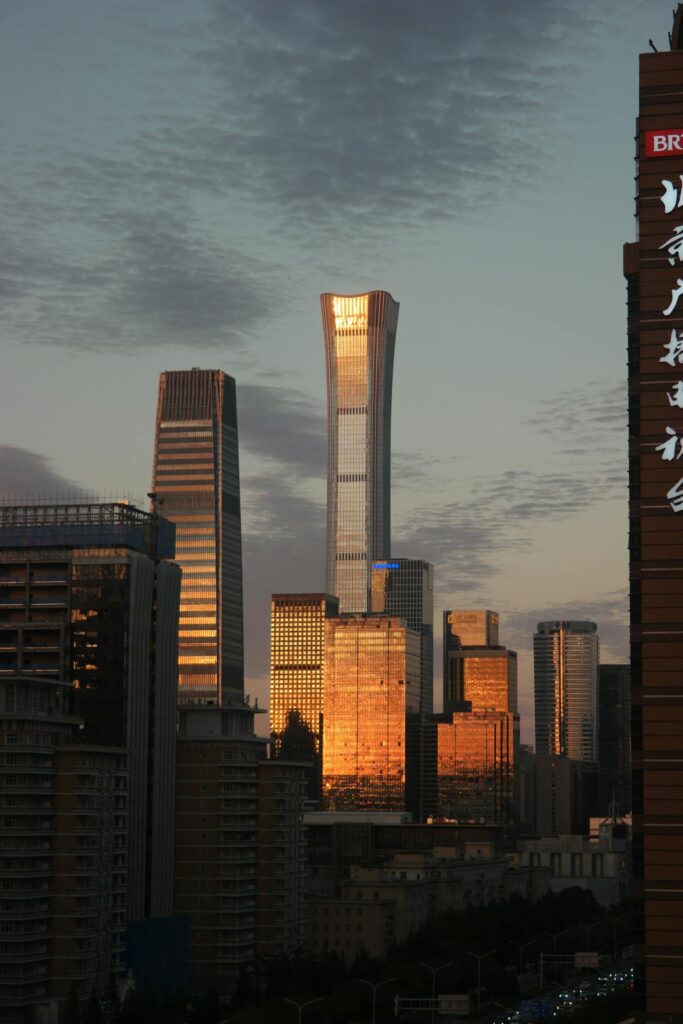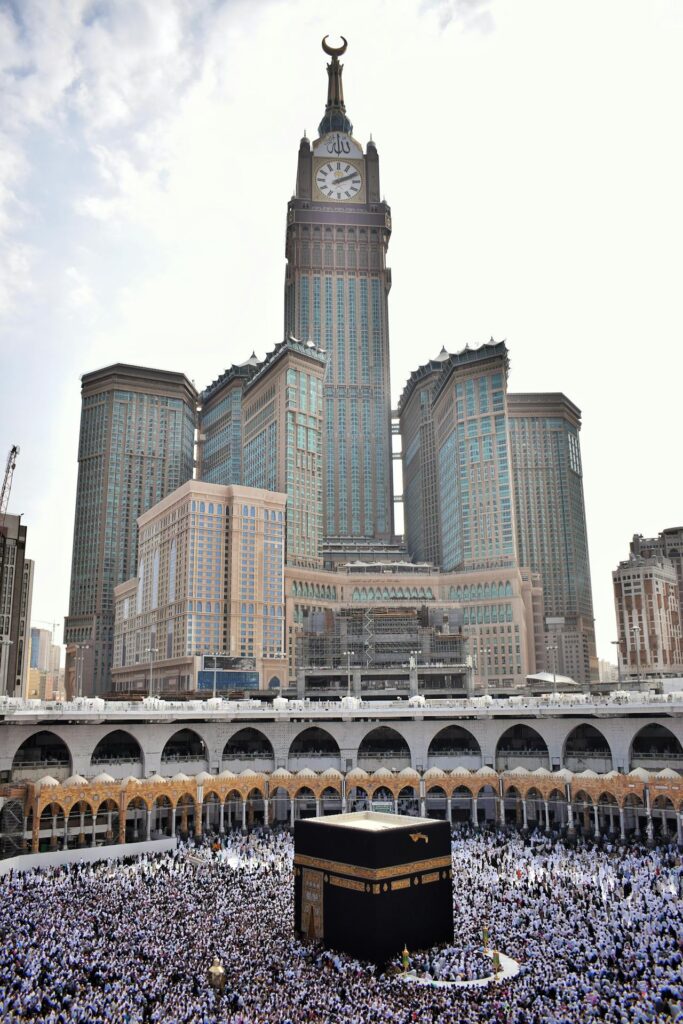Tall buildings have always captivated the intrigue and interest of many. The idea of a giant tower providing multiple services is the epitome of a modern, bustling city, and a symbol of wealth across the world. Here are the tallest buildings in the world today as of 2024.
Grading Criteria: We will be ranking the tallest buildings only, not the tallest structures, so this will exclude things like communications towers, we will have a separate list for that 🙂
Note: Building heights are rounded to the nearest whole number.
10: CITIC Tower – 528 meters (1,732 feet)

CITIC Tower, also known as China Zun, is a skyscraper in Beijing, China. It’s the tallest building in the city and a prominent landmark in Beijing’s Central Business District that offers office buildings, retail areas, and public amenities. The building is inspired by a traditional and ceremonial Chinese vessel called a “Zun” which the tower resembles. It’s structural design is built to help reduce the sway caused by wind and seismic activity. Construction began in 2013 and finished in 2018 where it quickly became one of Beijing’s landmarks in its skyline. It is a centre of economic development that has helped develop the district, local economy and boosted appeal in surrounding areas.
9: Tianjin CTF Finance Centre – 530 meters (1,740 feet)

A sleek, modern-looking, and well-designed tower in Tianjin, China built in 2019 with construction beginning a decade before. The curvilinear design is not only for aesthetics but also helps to reduce wind resistance along with a diagonal bracing and reinforced concrete core that increases stability and reduces sway. The building also holds some impressive double deck elevators that allow for quick transition between its 98 Floors. Staying true to its name, the building is a major business and commercial centre that aids the growth of the local area and holds a range of services including offices, apartments, hotels and retail amenities. A symbol of China’s ever-growing economy.
8: Guangzhou CTF Finance Centre – 530 meters (1,740 feet)

Another giant entry from China, the Guangzhou CTF Finance centre is yet another building that showcases China’s economic might and their amazing collection of skyscrapers. While it shares the same height with the previous entry, this one is widely considered to be the tallest of the two. This building is also part of a trio of skyscrapers in the area along with the Canton Tower and the International Finance Centre. Like many other Skyscrapers, glass is the primary material used for the mirror-effect but also interestingly has some terracotta integrated into the building, which reflects traditional Chinese architecture. It has some of the fastest elevators in the world that reach speeds of over 70km/h. A modern financial hub blended with cultural heritage.
7: One World Trade Center – 541 meters (1,776 feet)

The tallest building in the western Hemisphere, The One World Trade Centre which is also known as the Freedom Tower is a prominent skyscraper in New York City, United States. It serves as a symbol of resilience following the 11th September 2001, terrorist attacks and was built on ground zero where the symbolic World Trade Centres fell. The building’s completion marked a significant milestone in the reconstruction and revitalisation of the area. Following on from the symbolism, the tower’s height of 1,776 feet represents the year in which the united states declared its independence. The building has extremely rigid structural foundation that are made to withstand explosions and its sustainable high-performance glass creates great insulation and reflects light of the building in picturesque ways.
6: Lotte World Tower – 555 meters (1,819 feet)

An entry from South Korea in its capital city Seoul with design incorporating traditional Korean elements, such as the gentle curves inspired by Korean ceramics and calligraphy brushes. Harbouring a staggering 123 floors with 6 more underground, it offers a range of offices, residential and retail amenities that its guests can enjoy. It also has an observation deck between the 117th and 123rd floors that offers breath-taking panoramic views of Seoul and even a glass-bottomed skywalk. The building draws visitors from around the world attracting business professionals and tourists that all help boost the economy.
5: Ping An International Finance Centre – 599 meters (1,965 feet)

The second tallest building in China is the Ping An International Finance Centre which holds many impressive accolades. Along with another building that you will see on the list, it holds the joint record for the highest elevation deck in the world at 562m (1,844 feet) and also boasts one of the largest floor spaces in the world. This building is part of Shenzhen’s broader development, representing the city’s transformation into a major financial and business hub in southern China. The combination of high-speed elevators, tuned mass dampers, and advanced wind engineering showcases its architectural innovation. A modern business icon of economic power.
4: Abraj Al-Bait Clock Tower – 601 meters (1,971 feet)

The Abraj Al-Bait Clock Tower is a prominent skyscraper in Mecca, Saudi Arabia, and part of the larger Abraj Al-Bait complex, a large development comprising of several high-rise buildings that provide accommodation and facilities for pilgrims visiting Mecca. It is one of the tallest buildings in the world and is recognised for its massive clock face and strategic location near the Masjid al-Haram, the holiest site in Islam. Its actual height to the roof without the spire still reaches an impressive 530m (1,740 feet). The clock faces on the tower are among the largest in the world, with each measuring 43 meters (141 feet) in diameter ensuring they are visible from a great distance. The tower has a traditional Islamic architectural style, with intricate decorative elements and a spire resembling a minaret.
3: Shanghai Tower – 632 meters (2,073 feet) 

We have now reached the top 3 and come to the final, tallest building in China – the mighty Shanghai Tower. Located in the Pudong district, a major financial and business centre in Shanghai, it stands tall among a skyline of already-tall skyscrapers such as the Jin Mao tower and the Shanghai World Financial centre. The design of Shanghai Tower is characterised by its spiralling form, with a 120-degree twist from base to top fitted with double-layered glass with its shape having practical engineering benefits, reducing wind loads on the building. The spiralling design allows for a variety of public spaces and atriums throughout the building, contributing to its multifunctional nature and creating a sense of community within the tower.
2: Merdeka 118 – 679 meters (2,227 feet)

The newest building on the list being completed in 2023 in Kuala Lumpur, Malaysia. The Merdeka gets its name from the Stadium Merdeka where Malaysia’s independence (Merdeka) was declared in 1957. Given the region’s seismic activity, Merdeka 118 is designed to withstand earthquakes. The reinforced concrete core and flexible structure contribute to the building’s seismic resistance. In a city of skyscrapers, this building stands as a testament to Malaysia’s modernity and ambition. Equipped with offices for business, residential home areas, and other amenities to keep people entertained.
1: Burj Khalifa – 828 meters (2,717 feet)

We finally come to the tallest building in the world, the Burj Khalifa. It serves as the landmark skyscraper of the UAE and is renowned for its design, engineering and towering height. Built in 2010, it is in fact the oldest building on our list. It possess the most floors of any building at 163 and has a distinct “Y” shape with three wings that provide structural stability also to the great spire in the middle. The building is a symbol of Dubai’s growing economy and major tourist site that also brings loads of investment potential and economic growth to the area. It is quite possible that for the next few years, there will not be a building to rival this one.
Honourable Mention: Taipei 101 – 508 meters (1,667 feet)

The Taipei 101 was actually once the tallest building in the world when it was completed in 2004, Taiwan. The building was officially opened on New Year’s Eve 2004, with a grand fireworks display marking its inauguration. The building is known for its advanced engineering, particularly in its ability to withstand earthquakes and typhoons, which are common in Taiwan. It has become an iconic symbol of Taipei, representing the city’s modernity and economic growth with it often being featured in images and promotions of Taiwan and serves as a major business and commercial centre, contributing to the economic development of Taipei and the surrounding area. Taipei 101 has a distinctive design inspired by traditional Chinese architecture, particularly the bamboo plant. The building’s pagoda-like structure consists of a series of stacked segments, each resembling a bamboo joint – symbolising strength and resilience.
Other Contenders
Note – These are not in order of size nor are they the tallest after the runner up.
Shanghai World Financial Centre: A financial symbol of China’s city of Shanghai.
Petronas Tower: At one point these 2 towers in Malaysia were the tallest buildings in the world.
Empire State Building: One of the most iconic, tall buildings of the world.

